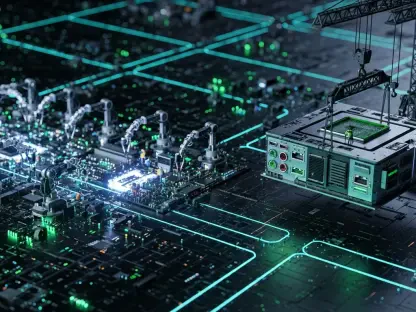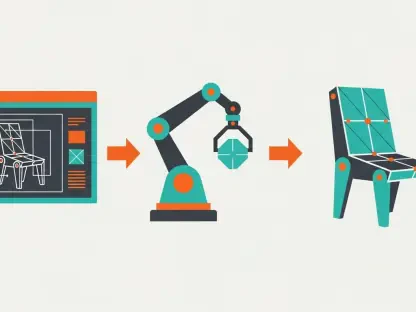I’m thrilled to sit down with Laurent Giraid, a renowned technologist whose deep expertise in artificial intelligence has made him a leading voice in the field. With a focus on machine learning, natural language processing, and the ethical implications of AI, Laurent offers a unique perspective on the rapidly evolving landscape of technology. Today, we’re diving into the groundbreaking $38 billion partnership between OpenAI and Amazon for AI computing power, exploring its implications for the industry, the challenges of scaling AI infrastructure, and the future of innovation in this space.
Can you walk us through the significance of the $38 billion deal between OpenAI and Amazon for AI computing power?
Absolutely. This deal is a massive step forward for OpenAI, as it secures a huge amount of computing resources through Amazon’s data centers in the U.S. Essentially, it allows OpenAI to run its AI systems, like ChatGPT, on a scale that matches the growing demand for these tools. It’s not just about raw power; it’s about ensuring they can keep innovating and serving millions of users without hitting bottlenecks. This kind of partnership signals how critical infrastructure has become in the AI race.
What specific role does Amazon Web Services play in powering OpenAI’s ambitions under this agreement?
Amazon Web Services, or AWS, is the backbone of this deal. Through AWS, OpenAI gains access to hundreds of thousands of Nvidia’s specialized AI chips, which are crucial for training and running complex models. The timeline is aggressive too—deployment starts immediately, with full capacity targeted before the end of 2026, and potential expansion into 2027 and beyond. It’s a clear sign that both companies are betting big on the immediate need for scalable AI solutions.
How does this partnership fit into OpenAI’s evolving relationship with other cloud providers?
This deal comes on the heels of OpenAI rethinking its exclusive reliance on Microsoft, which was its sole cloud provider until recently. By diversifying with Amazon, OpenAI is spreading its bets and reducing dependency on a single partner. I think it’s a strategic move—having multiple providers not only mitigates risks but also gives OpenAI leverage to negotiate better terms and access different technologies tailored to their needs.
What broader impact do you think this collaboration could have on the trajectory of AI development?
It’s a game-changer. Amazon itself highlighted the unprecedented demand for computing power driven by AI’s rapid advancement, and this partnership is a direct response to that. For OpenAI, the challenge is twofold: meeting the energy and computational demands to keep tools like ChatGPT running smoothly for millions of users, and pushing the boundaries of new AI systems. This deal underscores that without massive infrastructure investments, the pace of AI innovation could stall.
OpenAI recently underwent a significant structural change. Can you shed light on what that means for their future?
Yes, regulators in California and Delaware approved a shift in OpenAI’s business structure, moving from a nonprofit to a model that’s more conducive to raising capital and generating profit. Originally founded as a nonprofit, this change allows OpenAI to attract investors more easily and fund these enormous infrastructure commitments. It’s a pragmatic move to balance their mission-driven roots with the financial realities of scaling AI.
Speaking of financial commitments, can you elaborate on the scale of OpenAI’s investments in AI infrastructure?
OpenAI has gone all-in, with over $1 trillion in financial obligations for AI infrastructure. This includes data center projects with major players like Oracle and SoftBank, as well as semiconductor deals with chipmakers like Nvidia, AMD, and Broadcom. These investments are about securing the building blocks—data centers and chips—that power AI. It’s a staggering amount, reflecting both the cost of staying competitive and the belief in future returns.
There’s been some unease among investors about the nature of these deals. What’s behind those concerns?
Some investors are wary of what they call the “circular” nature of these agreements. Essentially, OpenAI isn’t profitable yet, so it’s relying on cloud providers and partners to front the infrastructure costs with the promise of future payoffs. It’s a risky model—if growth doesn’t materialize as expected, those investments could become liabilities. There’s a tension between the optimism driving these deals and the uncertainty of when, or if, they’ll pay off.
How has OpenAI’s leadership responded to skepticism about their financial strategy?
OpenAI’s CEO has pushed back against what he calls “breathless concern” over these deals. He’s emphasized that revenue is growing sharply and that they’re making a calculated bet on continued growth. It’s a confident stance—acknowledging the risks but doubling down on the idea that the demand for AI tools will keep soaring, justifying these massive upfront costs.
With Amazon also partnering with other AI players, how do you see this shaping competition in the industry?
Amazon’s already the primary cloud provider for another AI startup that’s a direct rival to OpenAI, which adds an interesting layer to the competitive landscape. This rival develops a chatbot similar to ChatGPT, and Amazon’s involvement with both shows how cloud providers are becoming central to the AI ecosystem. It could drive innovation as companies vie for the best resources, but it also raises questions about how much influence these providers wield over the direction of AI development.
Looking ahead, what is your forecast for the future of AI infrastructure and partnerships like this one?
I think we’re just at the beginning of seeing these mega-partnerships define the AI landscape. The demand for computing power and energy will only grow as models become more complex and user bases expand. My forecast is that we’ll see even tighter integration between AI companies and cloud providers, possibly with more consolidation or exclusive deals. The challenge will be balancing innovation with sustainability—both financially and environmentally—as these systems scale. I expect we’ll see creative solutions emerge, but it’s going to be a wild ride.









